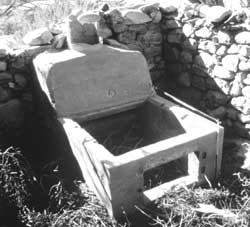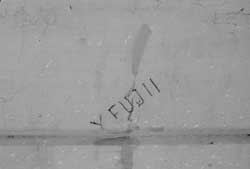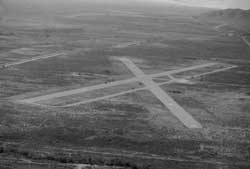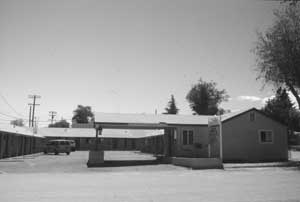MENU
|
| |
Confinement and Ethnicity: An Overview of World War II Japanese American Relocation Sites by J. Burton, M. Farrell, F. Lord, and R. Lord |

|
|
| |
Chapter 8 (continued)
Manzanar Relocation Center
Outlying Area
Other Features
 Figure 8.114. Evacuee-built oven 1/4 mile south of the central area. |
There are some inscriptions carved into the clapboard siding of the Lone Pine train station (Figure 8.115). Six evacuees worked at the train station unloading materials destined for the relocation center. Only two of six known inscriptions (Garrett and Larson 1977) remain; others were stolen by removing the clapboard sometime in 1992, just after the depot was no longer watched by a caretaker (Bill Michael, personal communication, 1993).
A World War II-era airport was located just across U.S. Highway 395 from the relocation center central area. Built for the Army in 1941 for bomber pilot training, testing experimental aircraft, and aircraft emergencies, it apparently was never used by the relocation center. There are many features remaining at the airport including a powerhouse, a hangar foundation, a storage building foundation, an aircraft parking area, a wind-T support, two 5,000-foot-long asphalt-paved runways forming an X, a taxiway, and a small trash dump (Figure 8.116).
 Figure 8.115. Inscription in the clapboard of the Lone Pine train station. |
 Figure 8.116. Oblique aerial view of the Manzanar airport today. |
 Figure 8.117. Barracks buildings at the Willow Motel in Lone Pine. |
 Top
Top
Last Modified: Fri, Sep 1 2000 07:08:48 pm PDT
http://www.cr.nps.gov/history/online_books/anthropology74/ce8q.htm
![]()

